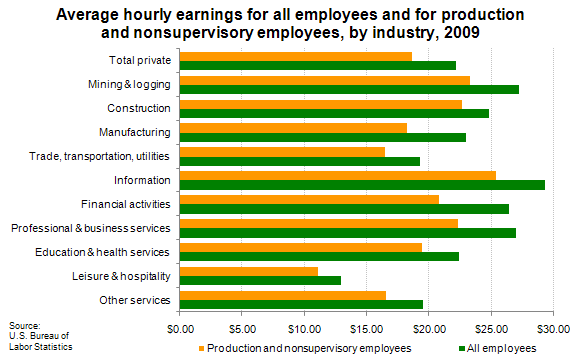Average hourly earnings of all employees were 19.3 percent higher than those of production and non-supervisory employees in 2009. This is according to data released by the U.S. Department of Labor's Bureau of Labor Statistics.
Among the major industry sectors, utilities had the highest average hourly earnings levels for all employees, as well as for production and nonsupervisory employees. Leisure and hospitality had the lowest hourly earnings, and retail trade had the next lowest hourly earnings.
Whether an industry is goods producing or service providing does not necessarily determine whether its average hourly earnings are above average or below average. For example, mining and logging had the fourth-highest earnings in 2009, while nondurable goods manufacturing had the fifth-lowest earnings. Similarly, information had the second-highest earnings, while leisure and hospitality had the lowest earnings overall.
The largest spread between average hourly earnings for all employees and those for production and non-supervisory employees occurred in financial activities.
This average hourly earnings data is from the Current Employment Statistics program and is annual averages for 2009. To learn more, see "New all-employee hours and earnings from the CES survey" (PDF), Monthly Labor Review, March 2010.





